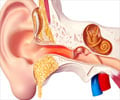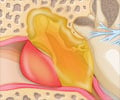- US department of health and human services- National institute of Health - Cholesteatoma - (https://rarediseases.info.nih.gov/diseases/10422/cholesteatoma/cases/25312)
- How Long is Long Enough to Follow up Children After Cholesteatoma Surgery? - (https://www.sbccp.org.br/arquivos/LG-2012-11-How-Long.pdf)
- An overview of chronic ear infections & cholesteatoma - (https://ent.ufl.edu/files/2013/06/Chronic-Ear-Infections-and-Cholesteatoma.pdf)
- Types of Vestibular Disorders- cholesteatoma - (https://vestibular.org/cholesteatoma)
- Chronic Otitis Media, Cholesteatoma and Mastoiditis - (https://www.health.harvard.edu/a_to_z/chronic-otitis-media-cholesteatoma-and-mastoiditis-a-to-z)
- What is a Cholesteatoma? - (https://ent-specialist.org/cholesteatoma/)
What is Cholesteatoma?
Cholesteatoma is a rare and abnormal, growth of skin cells located behind the tympanic membrane in the middle ear. A cholesteatoma develops as a pouch or a cyst, in which layers of dead skin accumulate and cause an increase in the size of the cyst.
Cholesteatoma is a non-cancerous skin growth but can grow with time and result in erosion of the bones inside and surrounding the ear and extend into the brain. It may be present from birth but mostly it occurs due to chronic ear infections. A cholesteatoma appears pearly white in color and is often mistaken for a cholesterol granuloma.
The word cholesteatoma was coined by a German physiologist Muller in 1838. The term
cholesteatoma is inaccurate as these cysts do not contain cholesterol but whitish keratin flakes which resemble cholesterol crystals.
What are the Causes of Cholesteatoma?
- Congenital: Some children are born with small pieces of skin that become trapped in the middle ear in the fetal developmental stages
- Middle ear infections: Chronic ear infections, injury or ear surgery may result in a torn eardrum This can make skin cells from the outer part of the eardrum to grow into the middle ear through the torn eardrum and form a cholesteatoma
- Eustachian tube dysfunction: The Eustachian tube runs from the back of the nose to the middle ear and its function is to regulate air pressure inside the ear. Repeated middle ear infections, chronic infections, sinus infections, allergies may cause swelling and block the Eustachian tube. This causes an imbalance in air pressure and creates a cyst or pocket by stretching the eardrum in which dead cells can collect and form a cholesteatoma.










